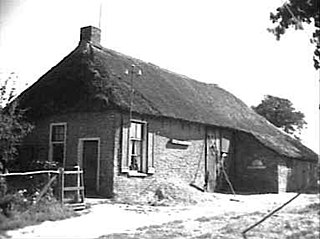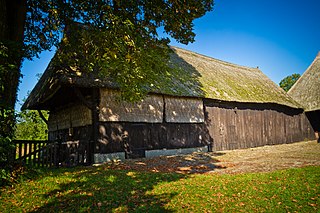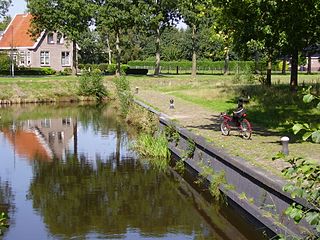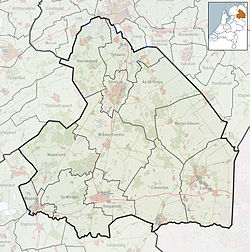
Borger-Odoorn is a municipality in the northeastern Netherlands in the province of Drenthe.

Darp is a village in the Dutch province of Drenthe. In 2001, the town of Darp had 507 inhabitants. It is a suburb of the municipality of Westerveld, and lies about 19 km west of Hoogeveen.

Havelterberg is a village in the Dutch province of Drenthe. It lies on the border of the municipalities Meppel and Westerveld, and lies about 21 km west of Hoogeveen.

Eext is a village in the Dutch province of Drenthe. It is a part of the municipality of Aa en Hunze, and lies about 12 km east of Assen. There are three hunebedden (dolmen) near the village.

Anloo is a village in the Dutch province of Drenthe. It is a part of the municipality of Aa en Hunze, and lies about 10 km east of Assen.

Gasteren is a village in the Dutch province of Drenthe. It is a part of the municipality of Aa en Hunze, and lies about 8 kmeast of Assen.

Balloo is a small village in the northeast Netherlands. It is located in the municipality of Aa en Hunze, Drenthe, about 5 km east of Assen.

Westdorp is a village in the Dutch province of Drenthe. It is a part of the municipality of Borger-Odoorn, and lies about 17 km northwest of Emmen.

Buinen is a village in the Dutch province of Drenthe. It is a part of the municipality of Borger-Odoorn, and lies about 18 km north of Emmen.

Bronneger is a small village in the Dutch province of Drenthe. It is a part of the municipality of Borger-Odoorn, and lies about 18 km east of Assen.

Drouwen is a village in the Dutch province of Drenthe. It is a part of the municipality of Borger-Odoorn, and lies about 17 km east of Assen.

Odoorn is a village in the Dutch province of Drenthe. It is a part of the municipality of Borger-Odoorn, and lies about nine km north of Emmen.

Exloo is a village in the province of Drenthe, Netherlands, part of the municipality of Borger-Odoorn. It lies about 12 km north of Emmen.

Valthe is a village in the Dutch province of Drenthe. It is a part of the municipality of Borger-Odoorn, and lies about 8 km north of Emmen.

Midlaren is a village in the Dutch province of Drenthe. It is a part of the municipality of Tynaarlo, and lies about 14 km southeast of Groningen.

Zeijen is a village in the Dutch province of Drenthe. It is a part of the municipality of Tynaarlo.

Steenbergen [ˈsteːmbɛrɣə(n)] is a village in the Netherlands and is part of the Noordenveld municipality in Drenthe. The hunebed (dolmen) D1 is located near the village.

Loon is a village in the Netherlands and is part of the Assen municipality in Drenthe. The hunebed (dolmen) D15 is located near the village.

Megalithic architecture appeared in what is now the Netherlands during the Neolithic period, especially in the northeast. Megalithic structures, i.e. buildings made of large upright stones, occur in various forms and functions, mainly as burial sites, temples or menhirs. In the Netherlands, only burial complexes are known. These large stone tombs were built between 3470 and 3250 BC by members of the Western Group of the Funnelbeaker culture (TBK) and were used until about 2760 BC. After the end of the Funnelbeaker culture in the Late Neolithic, the sites were reused by the Single Grave culture and the Bell Beaker culture during the ensuing Early Bronze Age and, to a lesser extent, into the Middle Ages.
























